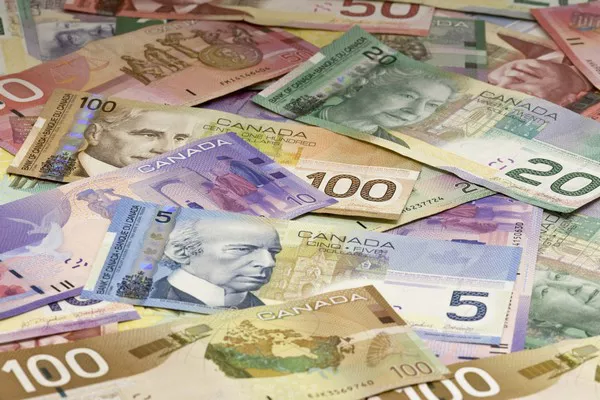In the realm of global currencies, Canada’s banknotes hold a distinct charm, reflecting the nation’s rich history, cultural diversity, and unique heritage. Among the various denominations, the Canadian $2 bill occupies a special place, embodying a blend of tradition, innovation, and symbolism. In this article, we embark on a captivating journey through the history and cultural significance of the Canadian $2 bill, exploring its evolution, features, and enduring legacy.
Understanding the Canadian $2 Bill:
The Canadian $2 bill, colloquially known as the “two-dollar bill,” has undergone several transformations since its introduction, each iteration reflecting shifts in design, security features, and societal values. Historically, the two-dollar bill featured prominent figures, iconic landmarks, and symbolic imagery that celebrated Canada’s heritage and achievements.
Evolution of the Canadian $2 Bill:
The journey of the Canadian $2 bill traces back to its inception in the mid-19th century, when Canada established its own currency system independent of British colonial influences. The early versions of the two-dollar bill showcased portraits of Canadian monarchs, such as Queen Victoria and King George VI, underscoring the nation’s ties to the British Crown.
In the 20th century, the design of the two-dollar bill underwent significant changes, with notable shifts in imagery and security features. The iconic “Devil’s Face” series, introduced in 1954, garnered attention for its distinctive portrait of Queen Elizabeth II, which some interpreted as resembling a devilish figure when viewed upside down. Despite its brief circulation, the “Devil’s Face” series remains a sought-after collectible among numismatists and enthusiasts.
In subsequent years, the Canadian $2 bill continued to evolve, incorporating new design elements, anti-counterfeiting measures, and thematic motifs that celebrated Canadian identity. Notable themes depicted on the two-dollar bill include wildlife, cultural landmarks, national symbols, and contributions of Indigenous peoples, reflecting Canada’s commitment to inclusivity and diversity.
Features of the Canadian $2 Bill:
The design of the Canadian $2 bill incorporates a blend of artistic creativity, historical significance, and technological innovation, making it both visually appealing and functionally secure. Key features of the two-dollar bill include:
Portrait of Queen Elizabeth II: As a constitutional monarchy, Canada features the reigning monarch’s portrait on its currency. Queen Elizabeth II, who has served as Canada’s sovereign since 1952, is depicted on the obverse side of the two-dollar bill, symbolizing continuity and tradition.
Iconic Canadian Landmarks: The reverse side of the Canadian $2 bill often showcases iconic landmarks, natural wonders, or cultural symbols that hold significance to Canadians. Examples include the Northern Lights, the Canadian Rockies, Parliament Hill, or historical sites commemorating pivotal moments in Canadian history.
Indigenous Representation: In recent years, Canadian banknotes have increasingly incorporated imagery and motifs that honor the contributions and heritage of Indigenous peoples. The inclusion of Indigenous artwork, symbols, or cultural references on the two-dollar bill reflects Canada’s commitment to reconciliation and respect for Indigenous rights.
Advanced Security Features: To combat counterfeiting and ensure the integrity of its currency, Canada incorporates sophisticated security features into its banknotes, including holographic elements, raised printing, microtext, and color-shifting inks. These features enhance the two-dollar bill’s durability and authenticity, safeguarding it against fraudulent replication.
Cultural Significance of the Canadian $2 Bill:
Beyond its monetary value, the Canadian $2 bill holds cultural significance as a tangible symbol of national pride, collective identity, and shared heritage. Throughout history, the two-dollar bill has served as a canvas for storytelling, commemoration, and artistic expression, reflecting the diverse tapestry of Canadian society.
Commemoration of Milestones: The Canadian $2 bill often commemorates significant milestones, anniversaries, or events that have shaped the nation’s history and identity. From commemorating Canada’s centennial in 1967 to celebrating cultural festivals, the two-dollar bill serves as a lasting tribute to moments of collective significance.
Reflection of Canadian Identity: Through its imagery, symbolism, and thematic motifs, the Canadian $2 bill reflects the multifaceted nature of Canadian identity, encompassing aspects of history, geography, culture, and values. Whether depicting scenes of natural beauty, urban landscapes, or cultural traditions, the two-dollar bill embodies the essence of what it means to be Canadian.
Collector’s Item and Cultural Artifact: For numismatists, historians, and collectors, the Canadian $2 bill holds intrinsic value as a collectible item and cultural artifact. Rare or limited-edition versions of the two-dollar bill, such as the “Devil’s Face” series or commemorative issues, command premium prices on the collector’s market, reflecting their historical significance and scarcity.
Educational Tool and Conversation Starter: The Canadian $2 bill serves as an educational tool for teaching Canadians, especially younger generations, about their country’s history, geography, and cultural heritage. By examining the imagery and symbolism depicted on the two-dollar bill, individuals can engage in meaningful discussions about Canadian identity, values, and aspirations.
See Also: 6 Security Features on Canadian Currency
Conclusion:
In conclusion, the Canadian $2 bill stands as a testament to Canada’s rich tapestry of history, culture, and national identity. From its humble beginnings to its evolution as a cherished symbol of Canadian heritage, the two-dollar bill embodies the spirit of a nation shaped by diversity, resilience, and innovation. As Canada continues to embrace its cultural mosaic and forge ahead into the future, the Canadian $2 bill remains a timeless reminder of the values and aspirations that unite its people from coast to coast.


